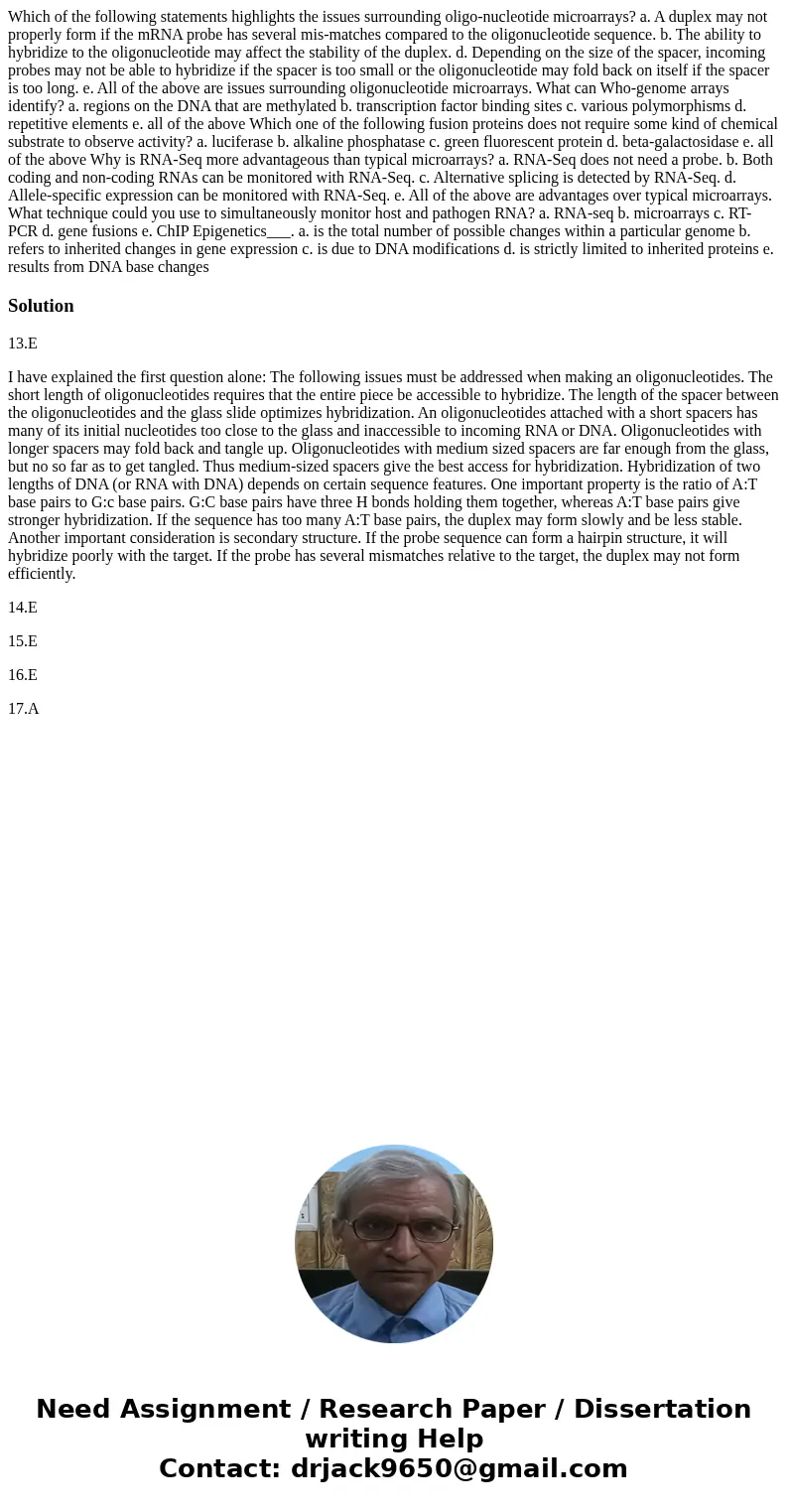Which of the following statements highlights the issues surrounding oligo-nucleotide microarrays? a. A duplex may not properly form if the mRNA probe has several mis-matches compared to the oligonucleotide sequence. b. The ability to hybridize to the oligonucleotide may affect the stability of the duplex. d. Depending on the size of the spacer, incoming probes may not be able to hybridize if the spacer is too small or the oligonucleotide may fold back on itself if the spacer is too long. e. All of the above are issues surrounding oligonucleotide microarrays. What can Who-genome arrays identify? a. regions on the DNA that are methylated b. transcription factor binding sites c. various polymorphisms d. repetitive elements e. all of the above Which one of the following fusion proteins does not require some kind of chemical substrate to observe activity? a. luciferase b. alkaline phosphatase c. green fluorescent protein d. beta-galactosidase e. all of the above Why is RNA-Seq more advantageous than typical microarrays? a. RNA-Seq does not need a probe. b. Both coding and non-coding RNAs can be monitored with RNA-Seq. c. Alternative splicing is detected by RNA-Seq. d. Allele-specific expression can be monitored with RNA-Seq. e. All of the above are advantages over typical microarrays. What technique could you use to simultaneously monitor host and pathogen RNA? a. RNA-seq b. microarrays c. RT-PCR d. gene fusions e. ChIP Epigenetics___. a. is the total number of possible changes within a particular genome b. refers to inherited changes in gene expression c. is due to DNA modifications d. is strictly limited to inherited proteins e. results from DNA base changes
13.E
I have explained the first question alone: The following issues must be addressed when making an oligonucleotides. The short length of oligonucleotides requires that the entire piece be accessible to hybridize. The length of the spacer between the oligonucleotides and the glass slide optimizes hybridization. An oligonucleotides attached with a short spacers has many of its initial nucleotides too close to the glass and inaccessible to incoming RNA or DNA. Oligonucleotides with longer spacers may fold back and tangle up. Oligonucleotides with medium sized spacers are far enough from the glass, but no so far as to get tangled. Thus medium-sized spacers give the best access for hybridization. Hybridization of two lengths of DNA (or RNA with DNA) depends on certain sequence features. One important property is the ratio of A:T base pairs to G:c base pairs. G:C base pairs have three H bonds holding them together, whereas A:T base pairs give stronger hybridization. If the sequence has too many A:T base pairs, the duplex may form slowly and be less stable. Another important consideration is secondary structure. If the probe sequence can form a hairpin structure, it will hybridize poorly with the target. If the probe has several mismatches relative to the target, the duplex may not form efficiently.
14.E
15.E
16.E
17.A

 Homework Sourse
Homework Sourse